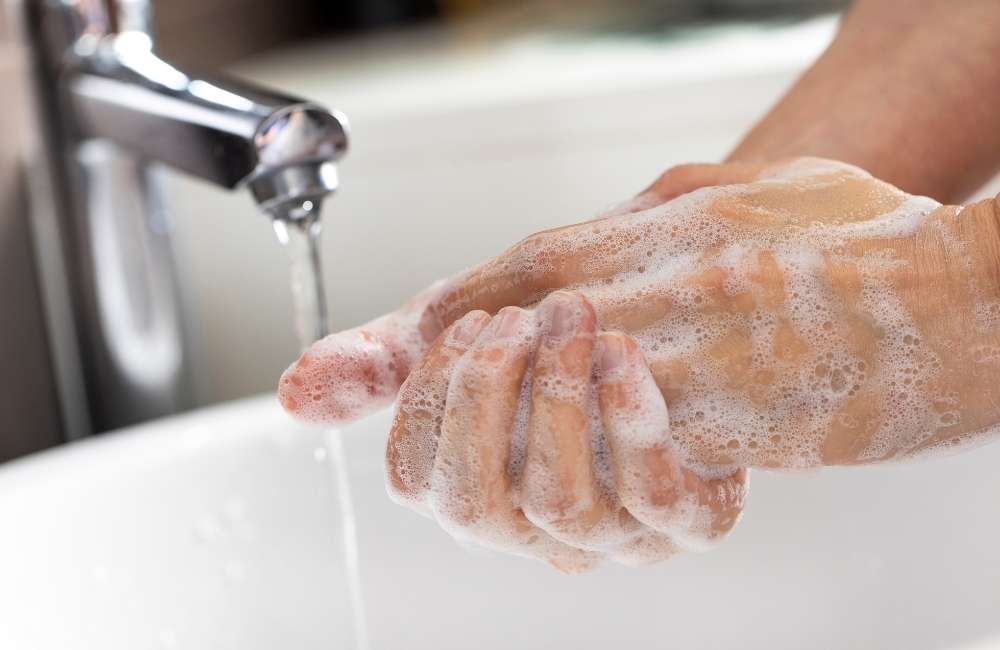Monkeypox is a rare viral zoonosis (virus infection transmitted to humans from animals) caused by the monkey virus, the Orthopoxvirus genus and in the family Poxviridae.
Other members of the family include
- Variola virus that causes smallpox
- Vaccinia virus used in smallpox vaccine
- Cowpox virus
Luckily compared with smallpox, monkeypox is less deadly. Between 1 to 3 % of the patients die from it while 30% of mortality is attributed to smallpox. The natural reservoir is still unknown but findings have it those rodents and some monkeys may harbour the virus and infect people.
The illness typically lasts for 2−4 weeks. In Africa, monkeypox has been shown to cause death in as many as 1 in 10 persons who contract the disease.
When Did Monkeypox Start?
In 1958, there were two outbreaks of a pox-like disease in colonies of monkeys kept for research, hence the name ‘monkeypox. The first human case of monkeypox was recorded in 1970 in the Democratic Republic of Congo (DRC) during a period of intensified effort to eliminate smallpox.
Strains of the Virus
There are 2 strains of the virus named after the places the virus is common. The West African strain (is believed to be milder) than the central African Strain.
- West African Strain
- Central African strain
It takes about 1 week to 2 weeks for symptoms to first manifest from the time of getting the virus.

Symptoms of Monkeypox
- Fever/Chills
Usually, high-grade fever is associated with chills.
- Rashes
Rashes erupt 1-3 days after the onset of fever. The rashes typically start from the face and spread to other parts of the body
The rashes progress in this order.
-
- Macules – flat lesions that are less than 1 cm in size
- Papules – a raised area of skin tissue that’s less than 1 centimetre around.
- Vesicles – a thin-walled sac filled with a fluid, usually clear and small
- Pustules – a bulging patch of skin that’s full of a yellowish fluid called pus.
- Scabs – a dry, rough protective crust that forms over a cut or wound during healing.
- Headache
- Muscle aches
- Backache
- Exhaustion
- Swollen lymph nodes
This typically distinguishes it from smallpox, which does not present with lymph node enlargements.
Transmission of Monkeypox
Transmission of monkeypox virus occurs when a person comes into contact with the virus from an animal, human, or materials contaminated with the virus. The virus enters the body through broken skin, respiratory tract, or mucous membranes (eyes, nose, or mouth).
Animal-to-human transmission may occur by bite or scratch, bush meat preparation, direct contact with body fluids or lesion material, or indirect contact with lesion material, such as through contaminated bedding.
Human-to-human transmission is thought to occur primarily through large respiratory droplets. Respiratory droplets generally cannot travel more than a few feet, so prolonged face-to-face contact is required.
Other human-to-human methods of transmission include direct contact with body fluids or lesion material, and indirect contact with lesion material, such as through contaminated clothing or linens.

Preventing Monkeypox
- Avoid contact with animals that could harbour the virus (including animals that are sick or that have been found dead in areas where monkeypox occurs).
- Avoid contact with any materials, such as bedding, that have been in contact with a sick animal.
- Isolate infected patients from others who could be at risk for infection.
- Good hand washing hygiene with soap and water or the use of alcohol-based hand sanitizer is advised after contact with infected animals or humans.
- Use personal protective equipment (PPE) when caring for patients. (face mask and protective gear)
- Measures should be taken to minimize the risk of laboratory transmission when testing routine clinical specimens from confirmed or suspected monkeypox patients. These may include:
-
- Limiting the number of staff testing specimens,
- Wearing appropriate personal protective equipment, using rigorously applied standard precautions.
- Avoid any procedures that could generate infectious aerosols.
- Veterinarians should consider all mammals susceptible to monkeypox and be aware of how the disease transmits from animal to animal.
Diagnosis of Monkeypox
Monkeypox is diagnosed by PCR test on a viral swab taken from one or more vesicles or ulcers, or a dry scraping of the scab. Swabs should be sent in viral transport media. Scab scrapings should only be taken if there are no other lesions and should be sent in a standard universal container.
Monkeypox Treatment
Currently, there is no treatment for monkeypox virus infection but in outbreaks, smallpox vaccine, antivirals, and vaccinia immune globulin (VIG) is used because cross-reactivity was observed.
The latest drugs approved for use are:
- Tpoxx(Generic name :Tecnovirimat) made by Siga technologies
- Tembexa(Generic name: Brincidofovir
Both drugs are antivirals, taken orally or as an injection
Conclusion
Because of the recently reported outbreaks in previously non-endemic countries, therefore any person presenting with fever and unexplained rash and with the above-listed symptoms should notify the appropriate health authorities.

